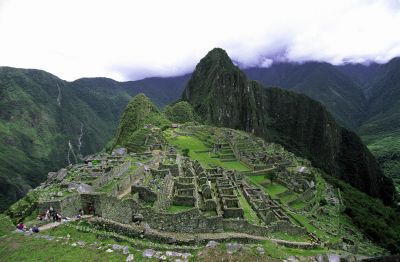Machu Picchu to reopen March 29: official

Your support helps us to tell the story
From reproductive rights to climate change to Big Tech, The Independent is on the ground when the story is developing. Whether it's investigating the financials of Elon Musk's pro-Trump PAC or producing our latest documentary, 'The A Word', which shines a light on the American women fighting for reproductive rights, we know how important it is to parse out the facts from the messaging.
At such a critical moment in US history, we need reporters on the ground. Your donation allows us to keep sending journalists to speak to both sides of the story.
The Independent is trusted by Americans across the entire political spectrum. And unlike many other quality news outlets, we choose not to lock Americans out of our reporting and analysis with paywalls. We believe quality journalism should be available to everyone, paid for by those who can afford it.
Your support makes all the difference.Peru's main tourist attraction Machu Picchu, one of the world's most prized heritage sites, will reopen March 29 after heavy rains cut off the ancient citadel earlier this year, a senior official said Friday.
Transport Minister Enrique Cornejo said the opening had been planned for April 1, but that the railway line to the remote Inca site that had been washed out by torrential rains has been partially restored.
"A few days earlier than we said, tourists can take a bus from Cusco to Ollataytambo and board the train to Machu Picchu," Cornejo told lawmakers.
The 15th-century city perched around 2,500 meters (8,200 feet) above sea level is the most visited site in South America, a pillar of the Cusco region and the source of 90 percent of Peru's tourist revenues, according to the country's finance ministry.
The railway was damaged in hundreds of places by flooding and landslides prompted by the rains that hit the country in late January.
Thousands of stranded foreign tourists were evacuated from the small village of Aguas Calientes, the gateway to Machu Picchu, threatened by rising waters from the Vilcanota river.
The Tourism Observatory had warned that Peru stood to lose up to 0.64 percent of GDP if tourism declined, with particularly serious repercussions for Cusco, where some 175,000 people make a living in the industry.
More than 2,000 tourists from all over the world visit Machu Picchu every day, tourism ministry officials said.
Cornejo said the rail link between Cusco and Machu Picchu would be fully restored by July at the latest.
ljc/fgf/mlm
Join our commenting forum
Join thought-provoking conversations, follow other Independent readers and see their replies
Comments